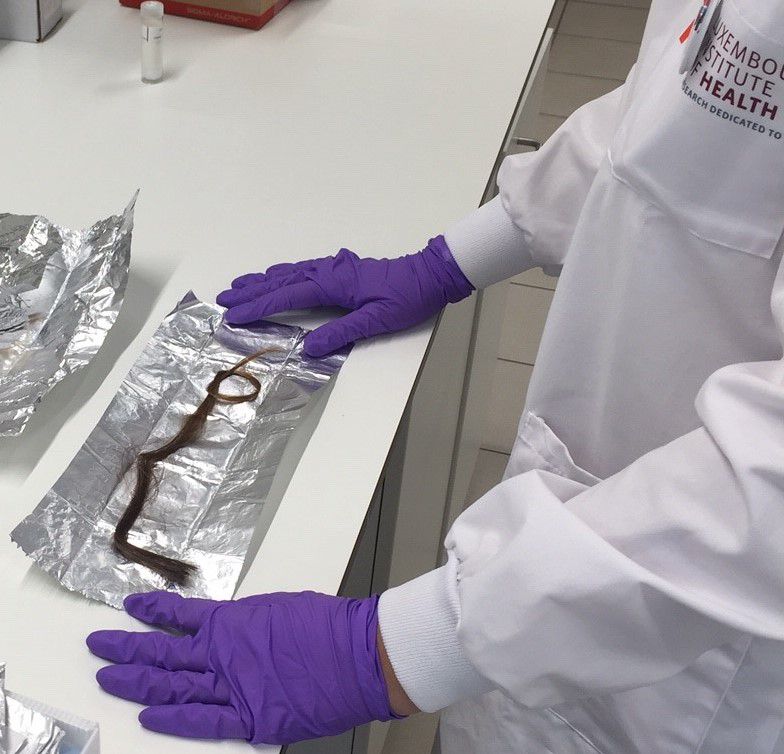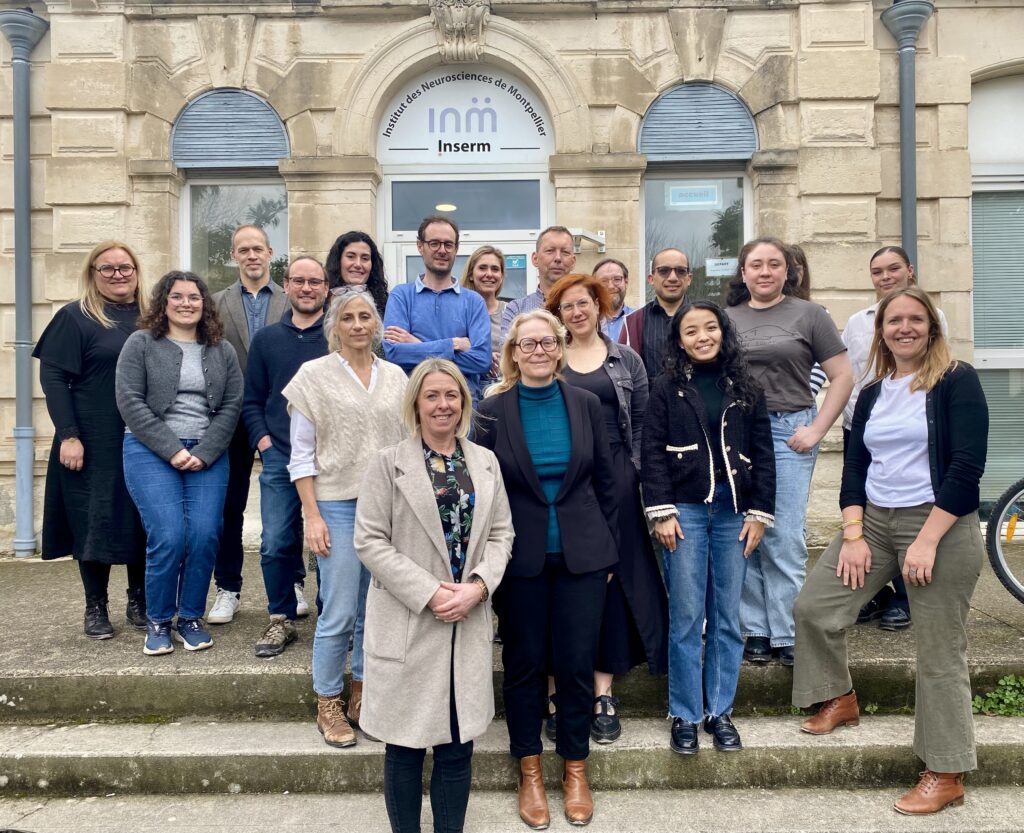- Domaines || de recherche
- Recherche Translationnelle
- Médecine translationnelle transversale (MTT)
- Centre opérationnel de médecine translationnelle (TMOH)
- Service Gestion de projets cliniques (CPMO)
- Centre d'investigation clinique & épidémiologique
- Centre de recherche clinique & translationnelle du Luxembourg (LCTR)
- Biobanque intégrée du Luxembourg (IBBL)
- Disease Modeling & Screening Platform (DMSP)
- Centre du génome Luxgen
- Plateforme de recherche en pathologie (RPP)
- Projets de Recherche
et essais cliniquesSoutenez-nous - Recherche Translationnelle
Communiqué de presse
Exposure to pollutants in the Luxembourg population
28 avril 2021
5minutes
- La Médecine Préventive
- Unité de Recherche sur la Biosurveillance Humaine
- Département Santé de Précision

An average of 19 different contaminants detected in the hair of study participants
In a recent study, scientists from the Human Biomonitoring (HBRU) research unit of the Luxembourg Institute of Health (LIH) exploited hair analysis to assess the exposure to 67 different organic pesticides in 497 adults representative of the population of the Grand Duchy. The researchers detected an average of 19 pollutants per individual, with some chemicals being present across the entire study cohort. The findings, which were published in April in the renowned international journal ‘Environment International’, unequivocally highlight the simultaneous exposure of the population to numerous different pollutants and set the basis for a more holistic understanding of their combined effect on human health.
The recent industrial and manufacturing past of Luxembourg and the use of pesticides in both agriculture and non-agricultural sectors mean that the general population was and still is exposed to a variety of organic chemicals. Although environmental exposure to pollutants is known to be associated with adverse health outcomes, few studies have so far evaluated the exposure of general populations to multiple contaminants.
In a first-of-its-kind nationwide pollutant biomonitoring investigation in Luxembourg, the LIH research team, led by Dr Brice Appenzeller, measured the concentrations of 34 persistent and 33 non-persistent pesticides in hair samples collected from 497 adults over 2007-2008 in the framework of the national study ORISCAV-LUX[1]. The analysed contaminants belonged to 11 common chemical families, including polychlorinated biphenyls (PCBs), polybrominated diphenyl ethers (PBDEs) and organophosphate pesticides (OPPs).
“One of the innovative aspects of our study was the use of hair as the substrate for the analyses, as opposed to traditional matrices such as blood and urine. Indeed, hair can provide us with information on chronic exposure to chemicals over several months, while fluids only provide an indication of exposure over the few hours preceding their collection”, explains Dr Appenzeller, leader of HBRU and corresponding author of the publication.
The scientists detected a total of 24 persistent and 29 non-persistent organic pollutants in the hair of the study participants, with 17 pollutants being present in more than half of the samples and four being present in every single individual – namely lindane, hexachlorobenzene, p-nitrophenyl and trifluralin. Variables such as sex, age and body mass index were also found to be significantly associated with most of these frequently detected pollutants.
“Each participant had detectable levels of at least 10 of the analysed chemicals, with some subjects having up to 36, giving an average of 19 pesticides per individual! This suggests the simultaneous exposure to numerous ubiquitous pollutants among the population, a very valuable piece of information when looking into possible ‘cocktail effects’”
says Dr Feng-Jiao Peng, post-doctoral fellow at HBRU and first author of the publication.
Interestingly, the production and use of many of the detected pesticides was banned in most European countries over the last decades, implying the ongoing exposure to these contaminants among the study population during 2007-2008 even despite the bans. This is likely due to factors such as the persistence of these chemicals in the environment, their progressive release from soil and vegetation and their bioaccumulation in the food chain, which is considered to be the primary route of exposure for the general population. The consumption of imported food from third countries with less restricting pesticide regulations could also contribute to this aspect.
“Leveraging our extensive and internationally-renowned expertise in the biomonitoring of pollutants in the hair, we have been able to document for the first time exposure in a large sample of the Luxembourg population, taking into account a variety of additional factors including extended age ranges, gender, socio-demographic aspects and education. The next step will be to exploit our findings to advance our understanding of the repercussions of chronic exposure to a combination of pollutants on population health”
concludes Dr Appenzeller.
[1] « Observation des Risques et de la Santé Cardiovasculaire au Luxembourg » (Observation of Cardiovascular Risks and Health in Luxembourg).
ABOUT THE LUXEMBOURG INSTITUTE OF HEALTH
The Luxembourg Institute of Health (LIH) is a public research organisation at the forefront of biomedical sciences. With its strong expertise in population health, oncology, infection and immunity as well as storage and handling of biological samples, its research activities have an impact on people’s health. At LIH, devoted scientists investigate disease mechanisms to develop new diagnostics, innovative therapies and effective tools to implement personalised medicine
Press releases
Funding and Collaborations
This study was performed by the Human Biomonitoring Research Unit (HBRU) of the LIH Department of Population Health (DoPH) in collaboration with the Competence Center for Methodology and Statistics (CCMS) of the LIH Department of Population Health, on behalf of the Nutrition, Environment, and Cardiovascular Health (NESCAV) project group for the Grand Duchy of Luxembourg.
The cross-border NESCAV project is supported by INTERREG IV A program “Greater Region” 2007-2013, which aims to stimulate interregional cooperation. The four regions receive co-funding from the European Regional Development Fund, in addition to financial support from their own or public health authorities.
Scientific Publication
Feng-Jiao Peng, Claude Emond, Emilie M. Hardy, Nicolas Sauvageot, Ala’a Alkerwi, Marie-Lise Lair, Brice M.R. Appenzeller. Population-based biomonitoring of exposure to persistent and non-persistent organic pollutants in the Grand Duchy of Luxembourg: Results from hair analysis. Environment International. https://doi.org/10.1016/j.envint.2021.106526







